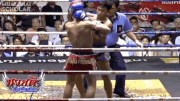skribs
Grandmaster
I will argue that knowing what details you want to keep them from applying and drilling keeping them from applying are related, but separate skills.Yes, absolutely. In fact I tell my students that whenever I teach them how to execute a technique I am also implicitly teaching them how to counter that same technique. Because every step and detail that you want to apply to your opponent is a step and detail you want to keep them from applying to you.




